The Hidden Buddhist Treasures of the Badami Caves

After Aihole, we reached Badami, also in the Malaprabha River valley. Now a quaint little town, this place was once the glorious capital of the powerful Badami Chalukya Kingdom (540 to 757 CE) which spanned across Deccan and Maharashtra. It is an enchanting place in North Karnataka with yellowish-red sandstone quartzite hills forming a canyon-like structure. Inspired by Ajanta and Ellora, the Chalukyas built many cave temples on the cliff face of Badami hills. Now, all that remains of the past glory are those intricately sculpted caves and temples.
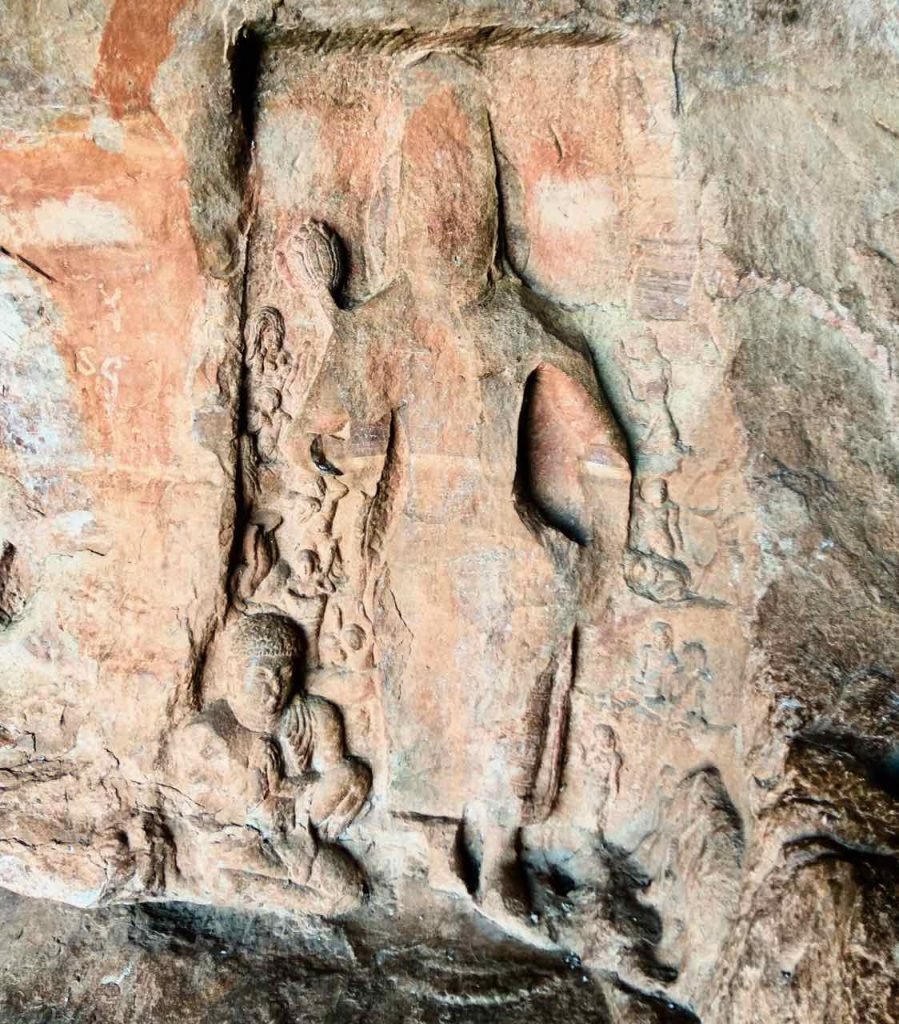
The place is well-known for it’s exquisitely carved rock-cut caves (man-made caves) of Shaivite, Vaishnavite, and Jain traditions. However, the presence of Buddhism in Badami Caves is not so well-known. There are two natural caves with Buddhist carvings, albeit modest in details. The carvings in one of the natural Buddhist caves pre-date the rock-cut caves and temples.

The sandstone cliffs are around a lake, currently known as both Agasthya-teertha and Bhutanatha-honda. There are four rock-cut cave temples and a natural cave in the southern side of the cliff, overlooking the lake. The natural cave has the carvings of the Buddha and Bodhisattva Padmapani (Avalokitesvara). On the eastern banks of the lake is the Bhutanatha Temple. In the rainy season, water fills up in the lake covering three sides of this temple. On the south-east bottom of the cliff, is a hidden natural cave, not frequented by tourists. This cave has a beautiful stone relief of the Buddha flanked by two celestial beings holding chamara (whisk). The drapes and ornaments reveal a distinct Mahayana styling.
The Natural Cave in the Cliff-face
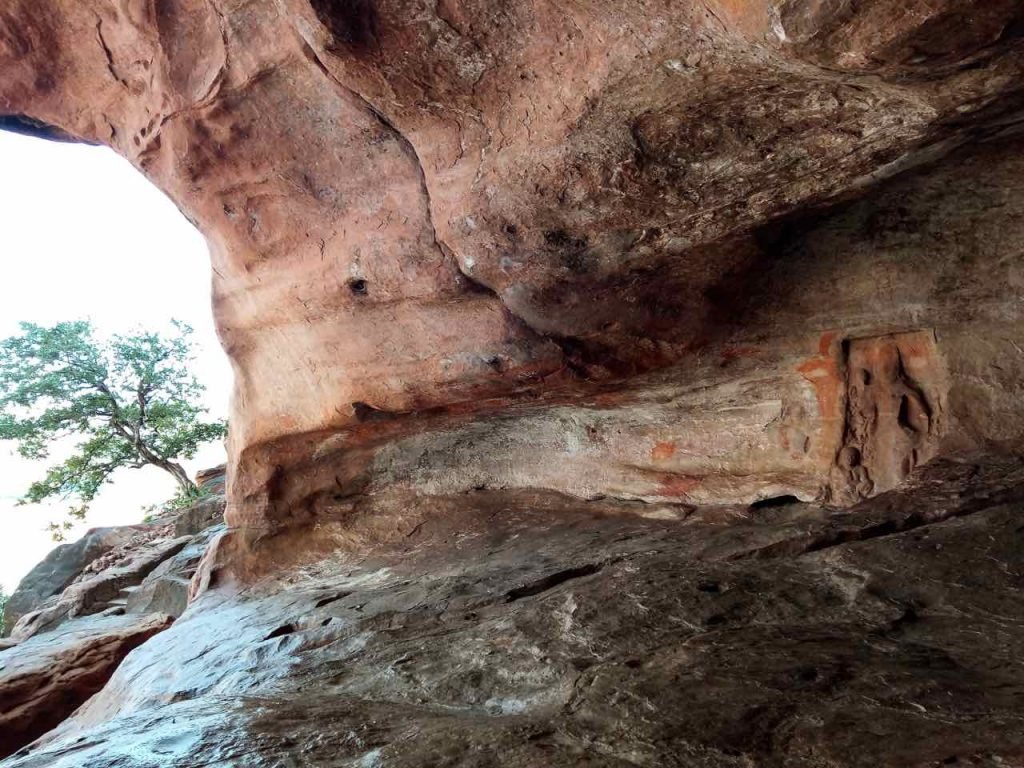
The natural cave in the cliff face was not developed as a temple, vihara or chaitya, but has some Buddhist carvings on one side of the wall. It is very minimalistic in nature and dated to be from the 5th Century CE. This is the earliest known evidence of presence of Buddhism in Badami Caves. Sculptures are that of the Buddha and Bodhisattva Padmapani (Avalokitesvara). Bodhisattva Padmapani is surrounded by the carvings of ashta-mahabhayas (the representations of the eight great fears that beings of Samsara undergo and suffer from). The Bodhisattva is the personification of the great compassion that strives to free up all beings from these fears and the related emotional states and then, eventually from Samsara itself. Every Mahayana practitioner strives to cultivate similar compassion within oneself. This is the same compassion that every practitioner of Mahayana strives to cultivate within themselves. This cave is an excellent place for meditation, with its vast open view. Since this was secluded away from the village, and yet not too far from the village (for alms), this would have been a favorite destination for meditators earlier, well before the elaborate rock-cut temples came up.


This cave has no signboards unlike the two rock-cut temples below it and two above. So, tourists hardly notice its significance. They just sit there to take a mobile-break and social-media connect before climbing further.
The sculptures in this cave are heavily mutilated and almost completely erased from the rock-surface, with only minor shades of carving visible now. It is a matter of curiosity that the two sculptures of the Buddha and Bodhisattva are not in any particular arrangement, and not in a central location in the cave. So, this may not have been part of a planned temple project. Most likely, a Buddhist yogi who was also a sculptor would have made these while staying in that cave.
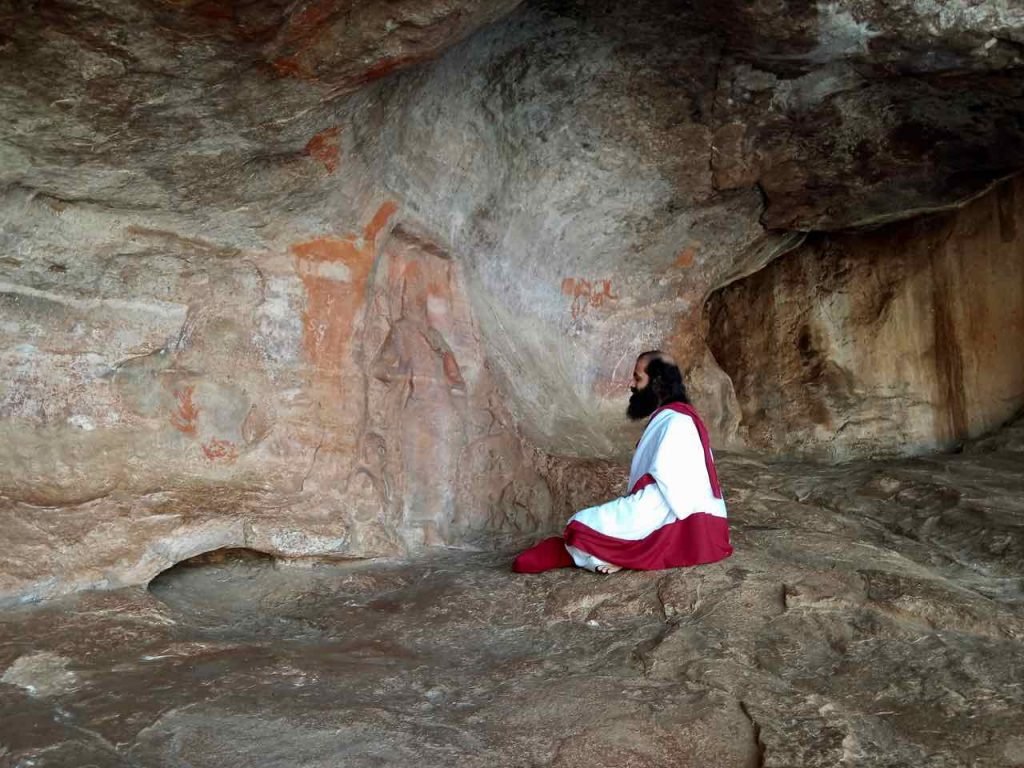

Rock-cut Caves in the Cliff-face
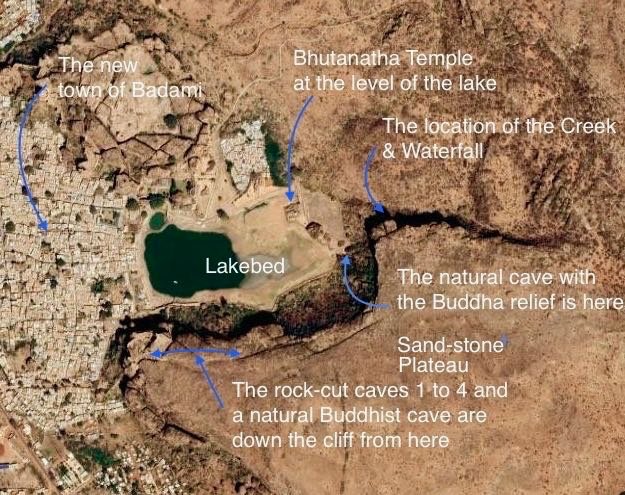
The rock-cut caves were developed one by one in chronological order from the bottom of the cliff upwards. The Cave 1 has Shiva as the chief figure with some elements of Vaishnavism. The elements of the then emerging syncretic Brahminical movement of panca-ayatana (that of worshipping Shiva, Vishnu, Shakti, Surya and Ganesha together) are strongly present in both the Shaivite and Vaishnavite caves here. The exception is that Surya is not seen in the Badami Caves. The second and third rock-cut caves (known now as Cave 2 and Cave 3) are Vaishnavite temples, incorporating all panca-ayatana elements except Surya. The styling of the doorkeepers of Cave 2 is heavily influenced by the Ajanta-Ellora iconography of Bodhisattvas. The Buddhist natural cave is between Cave 2 and Cave 3.
The fourth rock-cut cave (Cave4) is a Jain temple. It has many beautifully carved statues such as those of Mahavira, Parshvanatha, Rishabhanatha, Bahubali, etc.
We will keep the description of these rock-cut caves minimal as these details are widely available.
The Natural Cave at the Lakeshore with the Buddha Relief
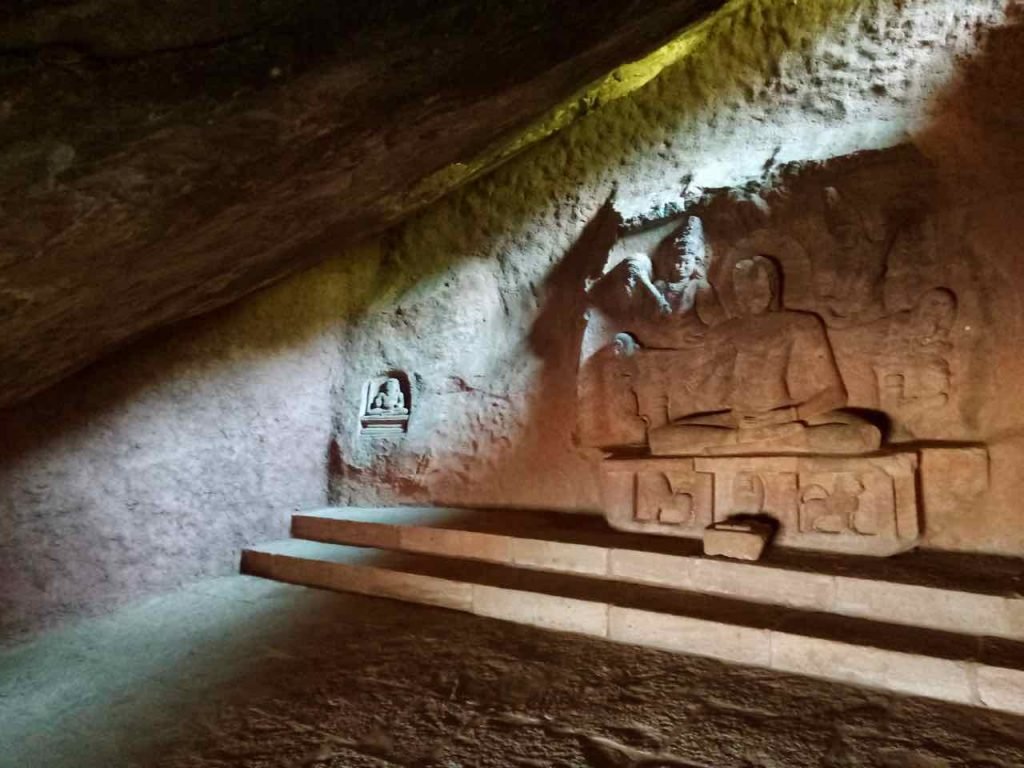
On the South-east corner at the lakeshore is a hidden treasure of Badami Hills. There is a cave which is rarely visited by the tourists. One has to squat or crawl to enter there. Inside, there is a fairly large space with an exquisite relief of the Buddha (6’6” in height) on the wall facing the entrance. The Buddha is flanked by two celestial beings holding chamara (fly-whisk). The drapes and ornaments of the Buddha reveal a distinct Mahayana style. The Buddha is seated on a throne supported by lions below, and there are vyalis and makaras on both side of the backrest. There are also markings of a conch (shanka) and the wheel of Dharma (dharmachakra) on the backrest on the two sides of the Buddha. These represent the auspicious symbols of the teaching. It is said that Indra and Brahma beseeched the Buddha to expound his discoveries and turn the wheel of Dharma. They presented the Buddha with a conch-shell and a dharma-wheel respectively. A prabha (halo) is carved behind the Buddha’s head, and there is also a tree under which the Buddha is seated. The Buddha’s right hand is in abhaya-mudra (the gesture of giving protection) and the left hand is in dhyana-mudra (the gesture of meditation).
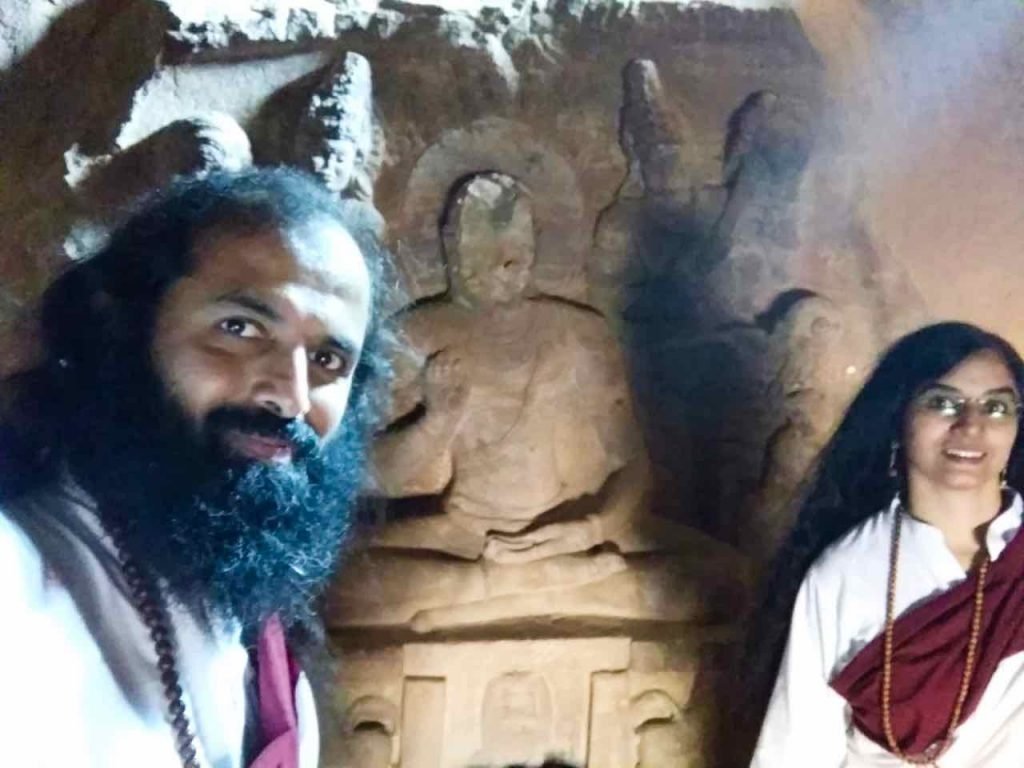

A pair of foot-impressions are kept separately on the floor just below the Buddha. Not sure if it was made to represent the Buddha’s foot-print or it is a later addition. It is not a perfect representation of the Buddha’s foot-print.
The face and ushnisha of the Buddha are totally destroyed. However, unlike the Buddha and Bodhisattva carvings in the other natural cave up the cliff, the rest of the statue is intact. The iconography style of the statue in this cave is that of the 7th Century CE.
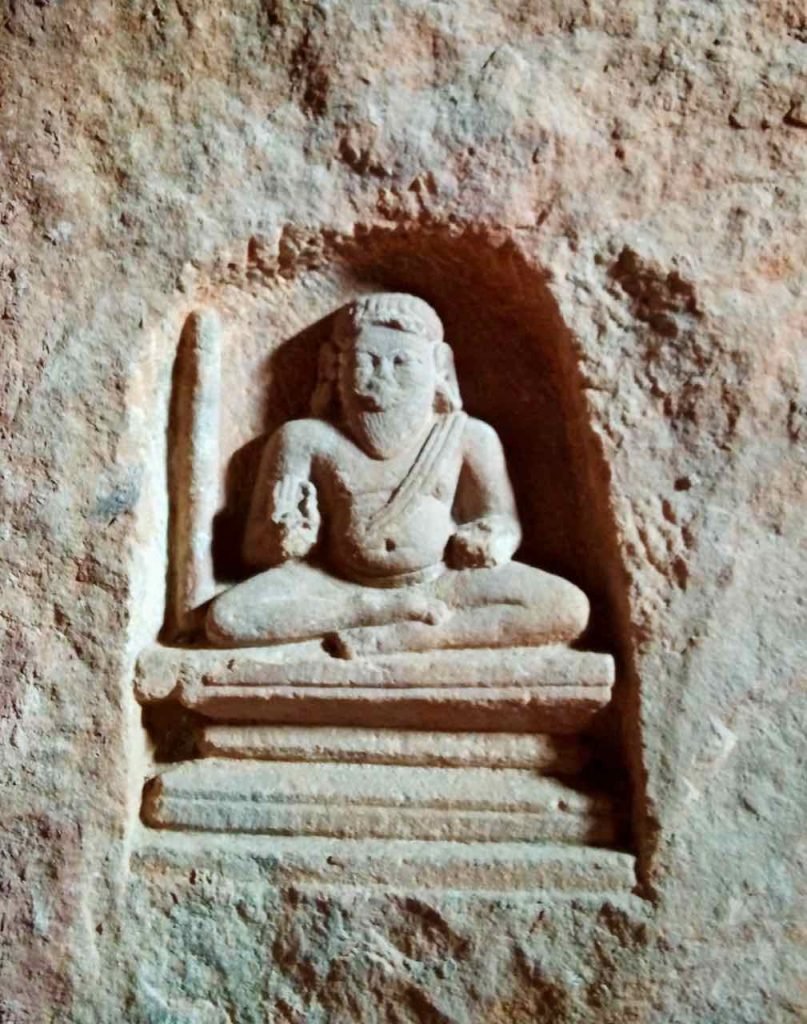
There is also a small carving of a yogi at one corner of the cave-wall. This could be either a Buddhist or non-Buddhist yogi. Though the right-hand shows tri-ratna mudra (the gesture of triple-jewels), there is a danda on the right side, which might indicate a relation to another ascetic order such as the Pasupatas who were also prevalent in this area. However, that carving is just done on a corner, and at a lower height than the Buddha, showing that whoever made that carving were not antagonistic to the presence of the Buddha statue there.
The cave is currently known as Kostaraya’s Cave. This name, Kosta Raya is attributed in a local legend to a Chalukya king (Raya) who had leprosy (Kosta). According to that legend, that king stayed in this cave and practiced till his leprosy was removed. So, some people believe that the statue is of that the king, which obviously is not the case as all the Buddha attributes are visible on the statue, except the broken ushnisha. However, there is an account that Kirtivarman I, the father of Pulakeshi II had leprosy. In that case, Kostaraya may be in reference to Kirtivarman I, and this Buddha statue was spared by Pulakeshi II, because it was associated with his father.
The Waves of Construction and Destruction
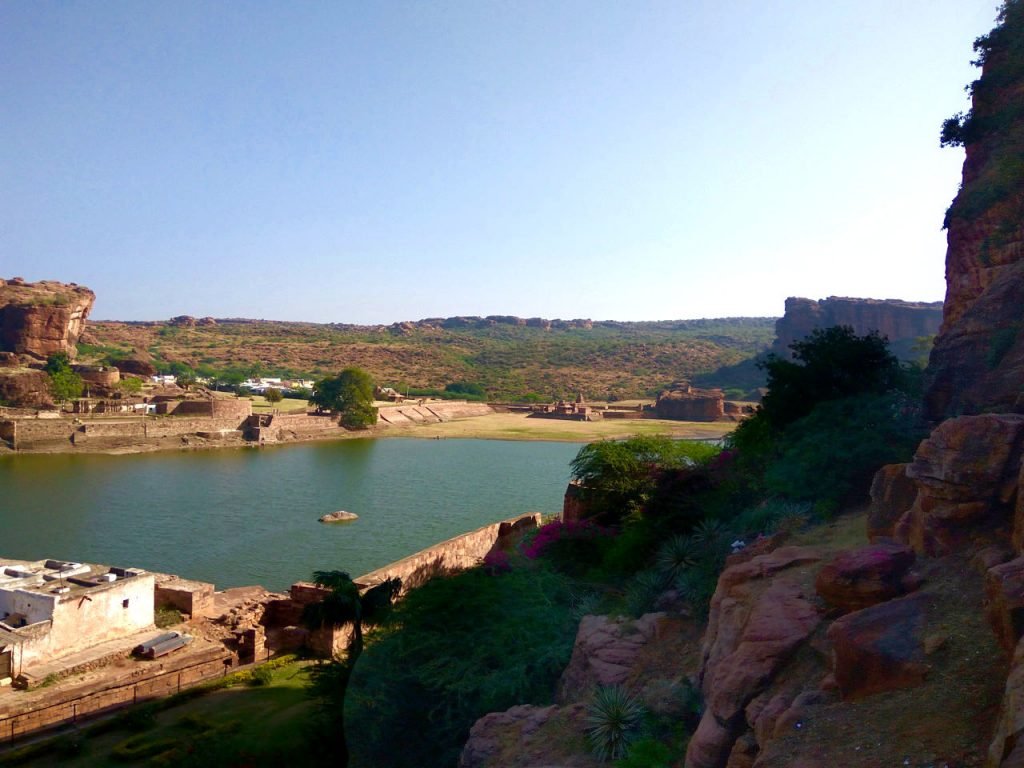
Construction, alteration, and mutilation of structures here happened in many waves as various kingdoms rose and fell in the Deccan Plateau.
It can be seen that the royal sponsorship changed with each of the reigning kings even within the Chalukya rule. The Buddhist carvings in the natural cave in the cliff were made by the 5th Century, that is before the Chalukyas chose Badami as their capital. The Shaivite rock-cut temple (Cave 1) was constructed after that around the mid 6th Century during the Chalukya rule. The two Vaishnavite rock-cut temples (Cave 2 and 3) were constructed after that in the late 6th Century. Cave 3 is dedicated during the reign of Mangalesha, the elder brother of Pulakeshi II. The Jain cave came up at the upper-most part by the 7th Century, probably during the reign of Pulakeshi II. It may be noted that the Jain Temple on top of Meguti Hill at Aihole also came up during that time. The Jain cave went through further enhancements during the 10th to 12th Century.
The Bhutanatha Temple at the lakeshore was built in the 8th Century. Ananthashayanam (Reclining Vishnu) Temple near Bhutanatha and the Tattukkodi Vishnu Temple on the northern side of the lake came up during the 12 Century CE. By 17th Century, a tomb for one Shahana Beebi was built on the western side of the lake by her husband Malik Aziz. As the guidebook by the Archeology Department says, it would be no exaggeration to call this the ‘Taj Mahal of Badami’.
As for the destruction of the statues and reliefs in Badami, it would have happened in various phases too. Unlike the structures of other caves and temples, the Buddhist carvings in the natural cave in the cliff are almost totally erased with painful effort. The purpose behind it seems to be to totally erase the history of Buddhism from there. Other structures went through only partial destruction, such as causing some damage to the nose and fingers. The purpose was primarily to desecrate and render them useless for worship. Historians consider that this later phase of destruction happened during invasions. Unlike those, the Buddhist carvings on the natural cave were erased, most likely, during the Chalukya reign itself. As discussed in, ‘Buddhism in Aihole – The Chalukya Period in Karnataka‘, Emperor Harsha of Kanauj (Harshavardhanana of the Vardhana Dynasty from North India) attacked Chalukya Kingdom during the reign of Pulakeshi II, and Pulakeshi could successfully protect his kingdom. Harsha’s devout support for Buddhism would have made Pulakeshi II antagonistic towards Buddhism during the war. This might be a cause for the total decline of Buddhist around the 7th-8th Century in this area, and possibly also a reason for the total erasing of the carvings from the cave. The Buddha statue in the Kostaraya’s cave would have been saved due to its connection with Pulakeshi’s father. Or, it is also possible that the statue in that cave came up after the fall of Chalukya Kingdom.
Anyway, all we can conclude from these waves of construction and destruction are that various emotions, attachments, fascinations, and delusions of various rulers and various groups have caused varying rises and falls of various systems during various times. This is very much in the nature of Samsara, and there is no reason to lament, grieve or emotionalize about any of these. All that we can learn from this phase is that a plethora of experimentations happened in this land during the rise and fall of various kingdoms, and even during the various kings within a kingdom. We can also see a significant presence of Mahayana Buddhism in Badami Caves with a clear influence from Ajanta and Ellora region at one point of time.
Also read,
Buddhism in Aihole – The Chalukya Period in Karnataka
- The Heart Sutra - September 4, 2025
- Dhammacakkappavattana Sutta - August 31, 2025
- Putheri (Buddheri) – The Southern most Stupa of Ancient India - January 19, 2023

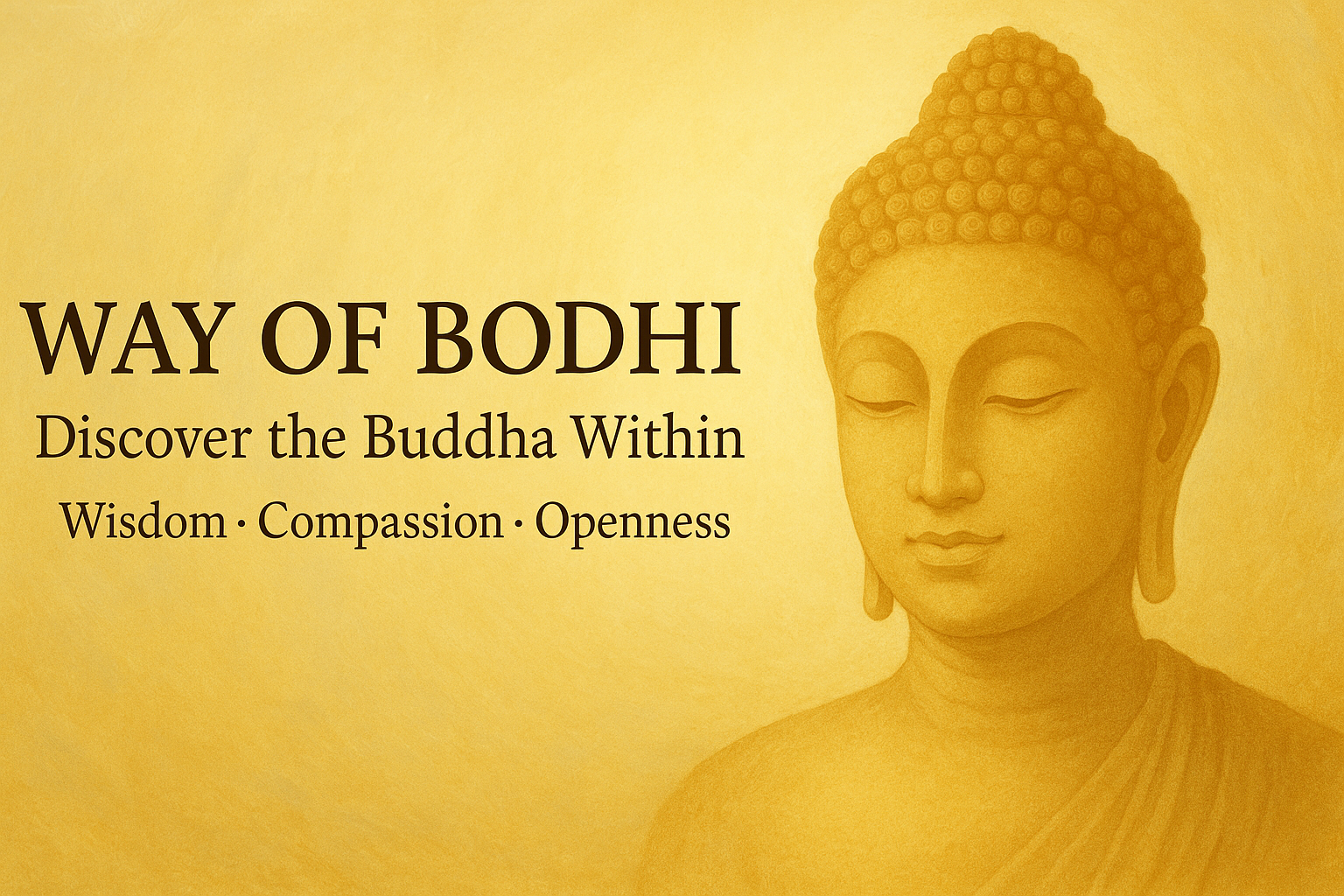
Great and civilisational work by the Kerala Yogi and Yogini; let the flowers bloom !